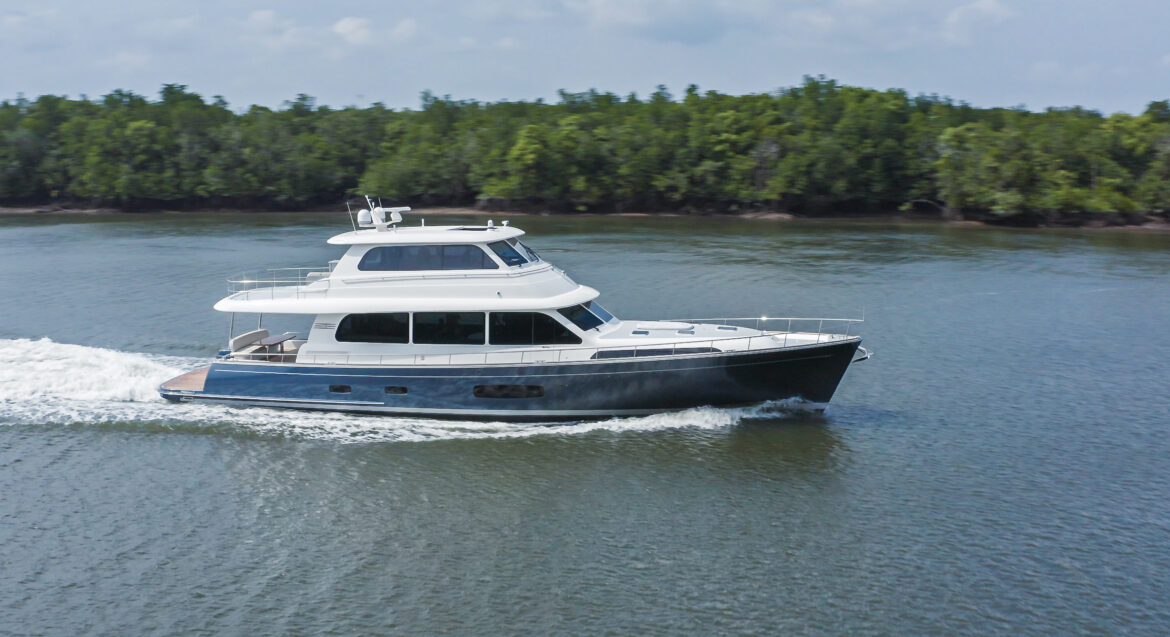What is more important than saving money and avoiding the trips to fuel up your vessel? Here are some tips that might help you save in the long run while still enjoying your time on the water.
The lower the fuel consumption, the happier the skipper or boat owner, correct? Saving fuel is an issue that “burns” many operators, especially when one or more high-horsepower outboard engines are mounted on the boat’s transom. The most economical operating range for modern outboard engines is between 3000 and 4000 rpm corresponding to cruising speeds of about 20 to 35 knots in most rigid hull inflatable boat (RIB) applications. We primarily operate our engine or engines at this when we have to cover long distances. In this article, we will try to explain the ways to reduce fuel consumption at low and medium rpm focusing on the factors that we can change.’
FUEL ADDITIVES
Many of the fuel docks that you visit likely offer the same fuel you would get for your car at a gas station. Using fuel with the right fuel additive will help to keep your boat’s engine free of gunk is an important way to maximize your boat engine’s fuel efficiency and reduce your engine’s fuel consumption.
A fuel additive helps dissolve filter-clogging residue caused by bacteria, adds lubricity to reduce injector wear and stabilises the fuel. Carbon deposits (gunk) reduce engine efficiency and performance and increase fuel consumption. In many instances, your boat’s engine(s) can burn up to 20 times more fuel per hour than your car or truck.
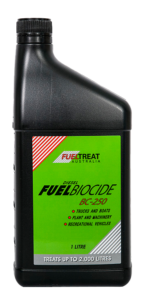
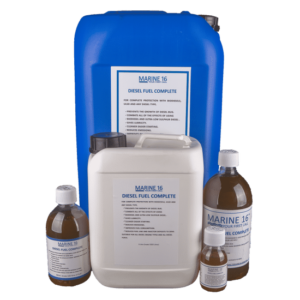
FUEL COMPUTERS
All boat owners on the water today want to squeeze more nautical miles from each litre of fuel. In addition to additives, there is another system that accomplishes that goal electronically – Fuel Computers.
Fuel Computer systems have been designed and manufactured for marine applications for over 40 years, and they have a reputation for accuracy and reliability, whether your boat runs on gasoline or diesel, is an outboard, inboard or stern drive. The heart of the system is an in-line turbine fuel flow sensor, which accurately provides real-time fuel consumption data. The data is routed to a standalone gauge package or through a digital module that links to the vessel’s chart plotter which will provide a readout for litres-perhour, and nautical miles per litre, and track how many litres of fuel have been burned since the last refuelling. When you know your boat’s real-time fuel burn, you can determine the combination of engine RPM and speed that achieves optimum fuel economy. This elusive figure is the key to operating your vessel in the most fuel-efficient manner. Fuel computer users report significant reductions in fuel consumption, often running at higher cruising speeds than they did before the system was installed. Savings can range from 5 per cent to 20 per cent, depending on vessel hull design, engine and drive system.
DIESEL FUEL POLISHING
Water, bacteria, sludge and dirt contaminate diesel every step of the way from the time it leaves the refinery to the time it sits in your boat’s fuel tank. To avoid problems while underway, start a preventative maintenance program for your diesel fuel before your boat ever leaves the dock for a fishing trip or a cruise. Use a full-spectrum fuel additive each time you top off, and polish your fuel regularly. A topof-the-line fuel additive dissolves the filter-clogging residue caused by bacteria, adds lubricity to reduce injector wear and stabilizes the fuel.
Regularly scheduled fuel polishing removes water, dirt and sludge from your tank and restores the fuel to its optimal quality. A bulk-head-mounted fuel polishing system is easy to install in your boat’s engine room or engine compartment. The fuel polishing system is plumbed into the diesel fuel tank’s pickup and return lines and can operate on either 12V DC or 120V AC power. The fuel polishing system will perform dialysis for your diesel using a multistage filtration process that recirculates your fuel until it is clean and free of contaminants.
Algae do not grow in diesel fuel. Algae requires sunlight and air to grow, neither of which are found at the bottom of a fuel tank. What we call algae is a stew of bacteria, mould and asphaltenes, which clog fuel filters. Only a small amount of the fuel flowing to a diesel engine is used by the injectors, the rest is returned to the tank and recirculated and reused. This returned fuel is very warm, and the heat contributes to the growth of bacteria and mould at the bottom of the tank where fuel and residual water interface.
Water is the biggest problem in this situation as microbes live on the oxygen in water and eat the carbon out of the fuel. (There are 127 known microorganisms that will happily live in fuel). Fuel polishing once or twice a month eliminates those contaminants, it will keep clean fuel cleaner for longer, but it will not magically clean dirty contaminated fuel.
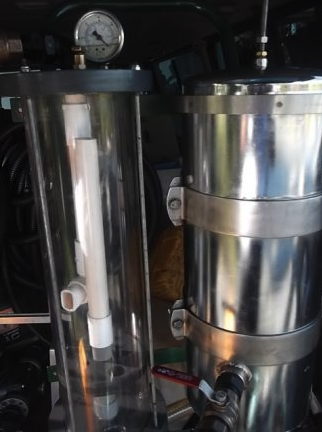
CLEAN, SMOOTH, AND PAINT THE BOTTOM
Make sure that any protuberances in the hull bottom are smoothed and do not interrupt the water flow. There’s no doubt about it – smoothing bottom paint saves fuel and money. A clean hull is more slippery, goes faster and maximizes the fuel economy. Conversely, a fouled bottom can cause reduced engine rpm, decreased speed and increased fuel consumption. Keep the bottom free of fouling with a good antifoul for your region, to get the maximum performance.
CHECK YOUR ENGINE(S)
Make sure air and oil filters are clean and items such as injectors are tuned properly (black smoke coming from your exhaust system usually indicates injectors that need to be cleaned).
PROPELLERS
One of the major factors that affect the overall performance of our boat-engine combination and its fuel consumption is the propeller. Matching the correct propeller to the boat can improve fuel economy.
When possible, choose a larger diameter. A larger-diameter propeller generally gets better fuel economy at low and medium rpm than a smaller wheel because the bigger one slips less. When stepping up in diameter, we need to reduce pitch to retain the same engine rpm. Beware not to fall into the trap of increasing the propeller pitch to the point of sacrificing the boat’s performance at low rpm or the proper operation of the engine.
Choose a three-blade propeller instead of a four-blade in the same diameter. A three-blade propeller usually delivers better fuel consumption than a four-blade of the same diameter because the extra blade creates drag. The exception is when we’re carrying heavier loads. Make sure that your propellers are perfectly balanced and free of barnacles and other cling-ons. For boats that remain in the water, ensure to apply a product such as Propspeed to keep your propeller and/or running gear free of foul. The Propspeed foul-release coating system is a high-impact, low investment Energy Saving Technology (EST) with a compelling ROI. Designed for application to running gear and underwater metals, the biocide-free foul-release coating system is proven to enhance vessels’ efficiency and environmental sustainability, through the reduction of fuel and power consumption from the day it is applied.
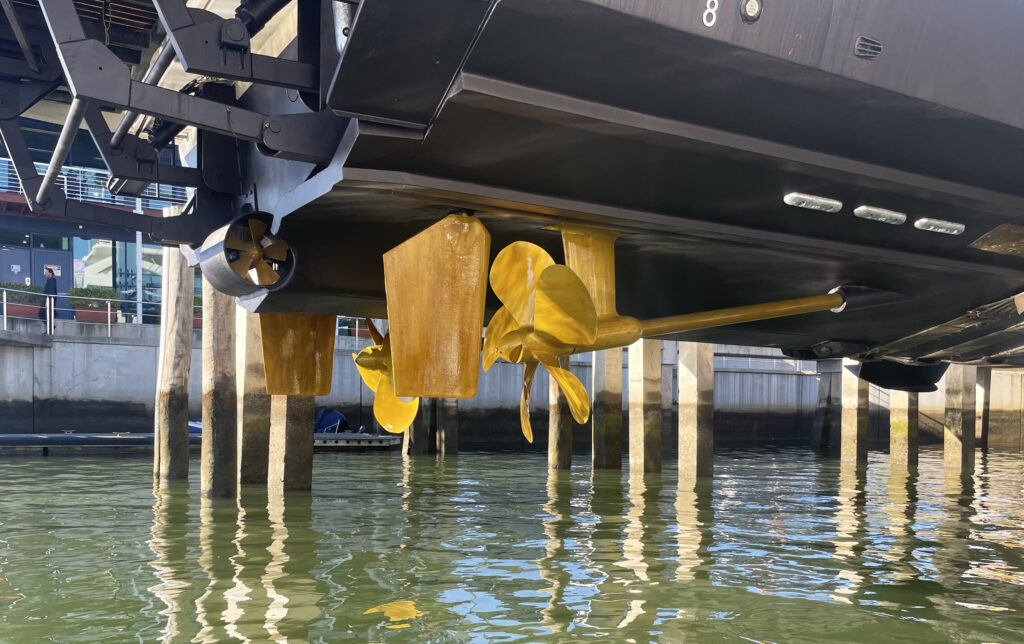
ENGINE MOUNTING HEIGHT
Depending on the size of your boat your outboard will either be short, long or extra-long shaft, then you can alter the height from there. We all know that there is no ideal engine mounting height because it depends on many factors interacting together. Generally, it’s better to mount the engine as high as possible without adversely affecting lowrpm performance. Having less of the gearcase in the water helps improve fuel economy by reducing drag.
At this point, we acknowledge the value of a hydraulic jack plate that lets a user adjust the ideal engine height to achieve the maximum fuel economy in changing conditions and uses of the boat. Proper engine mounting height and the right propeller can give you up to 50% lower fuel consumption.
PROPER ENGINE TRIM
The proper adjustment of the engine’s trim during a ride determines the boat’s attitude or the angle of the bow related to the surface. A boat’s attitude can significantly affect fuel efficiency. Knowing in advance the rpm range that produces the greatest economy, we use the throttle and trim to reach that setting.
How do we know the correct trim position? An experienced skipper can determine the proper trim position by looking at the spray that exits from the side, watching the wakes and listening to the engine. A less experienced operator should experiment with engine trim while observing the engine(s), the boat speed and fuel consumption to achieve the best combination of speed and fuel efficiency. When the conditions and load permit, a driver should trim out the engine to bring the cavitation plate parallel to the water surface. Usually, the best trim position is a little bit higher than this because we reduce the exposure of the lower unit in the water while raising the bow. At the same time, we try to keep as much of the hull out of the water minimizing the wetted surface.
All the above recommendations lead to the most efficient running angle, minimizing the drag and improving the fuel economy. Over-trimming the engine will cause the propeller to lose its bite and aerate, leading to reduced speed and increased fuel consumption.
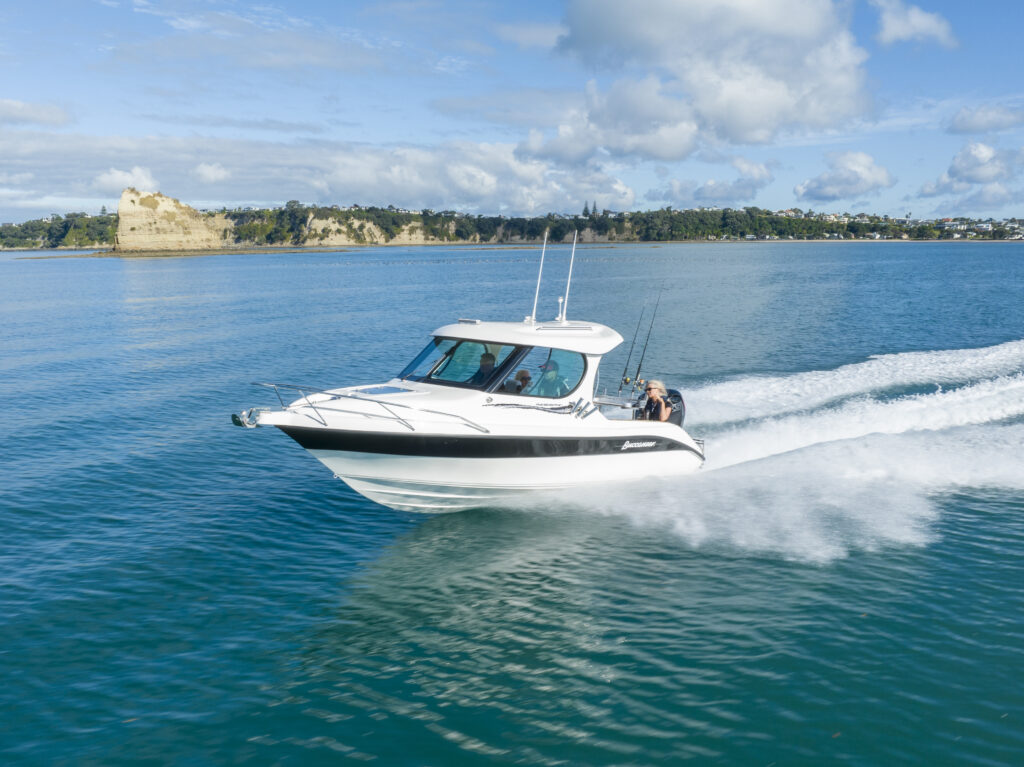
BALANCING WEIGHT
A heavy load and unbalanced weight distribution are the enemy of the centre of gravity and the correct attitude of a boat. Weight distribution can have a large impact on fuel consumption. This is why we must be particularly careful of the load and where it’s placed. Extra load increases the wetted surfaces of the hull resulting in greater drag and fuel consumption. The heavier the load, the more the fuel is burned and most people bring aboard more than they need. Remove everything you don’t need and load only what is necessary for each trip. There’s no need to carry extra refrigerators or spare anchors with many meters of chain when we will not need them. The same goes for fuel and water when we’re not travelling long distances. This, of course, does not mean that we are risking our safety for the sake of lower fuel consumption.
But even more important than the carrying loads is where they are located on board. Smaller boats and those with stepped bottoms are more sensitive to centre of gravity changes that greatly affect attitude. It can downgrade ride quality and increase fuel consumption, especially in bad weather. Store heavier objects around the centre of gravity and on the aft third of your deck, placing the less heavy ones towards the bow. Keep the bow light so you can “listen” to the trim settings and stay high and dry during a trip.
DRIVING STYLE
Handling the throttle smoothly, avoiding sudden acceleration and maintaining a steady course and consistent speed are sure to improve fuel economy. Keep the engine properly maintained and in good running order. Travel in good weather whenever possible and plan a course in advance. Travelling in bad weather conditions increases fuel consumption because strong headwinds and rough seas create additional resistance and force us to alter our course and fluctuate our speed.
GO SLOWER
We’ve been trained and impressed by how fast a boat goes and that’s not the most important factor (I have heard that in most cases, less than 3% of a boat’s engine life runs at full throttle). It’s better to ask what is the boat’s most efficient cruising speed. Chances are that will be from 3500 to 4500 RPM, so find out what that speed is and run there. But the most fuel-efficient range is displacement speeds before the boat tries to start to climb its bow wave. No rule says you have to be planing all the time.
CONCLUSION
We will never achieve optimum fuel economy if we don’t know our boat well, if we don’t handle it correctly or if it is not properly rigged. Think about how many hundreds of miles we cover every season and calculate how much money we can save by implementing the above tips to reduce fuel consumption. Applying the tips recommended in this article will hopefully keep you from spending too much time and money on fuel in the upcoming season.


